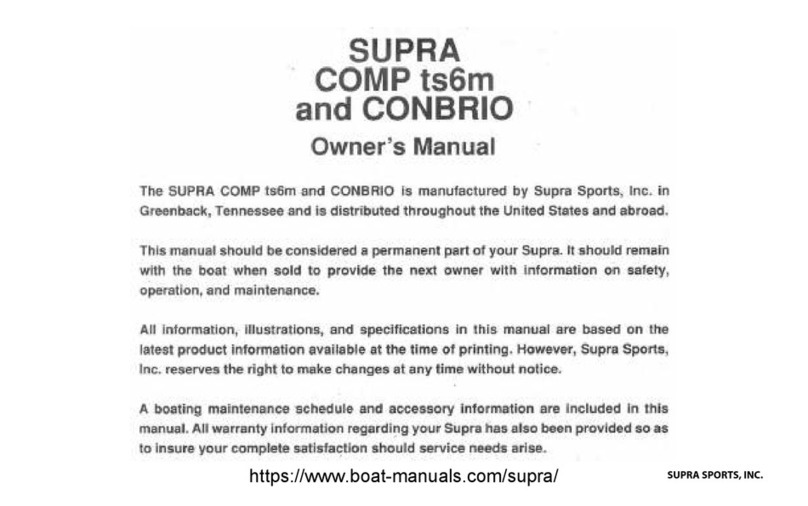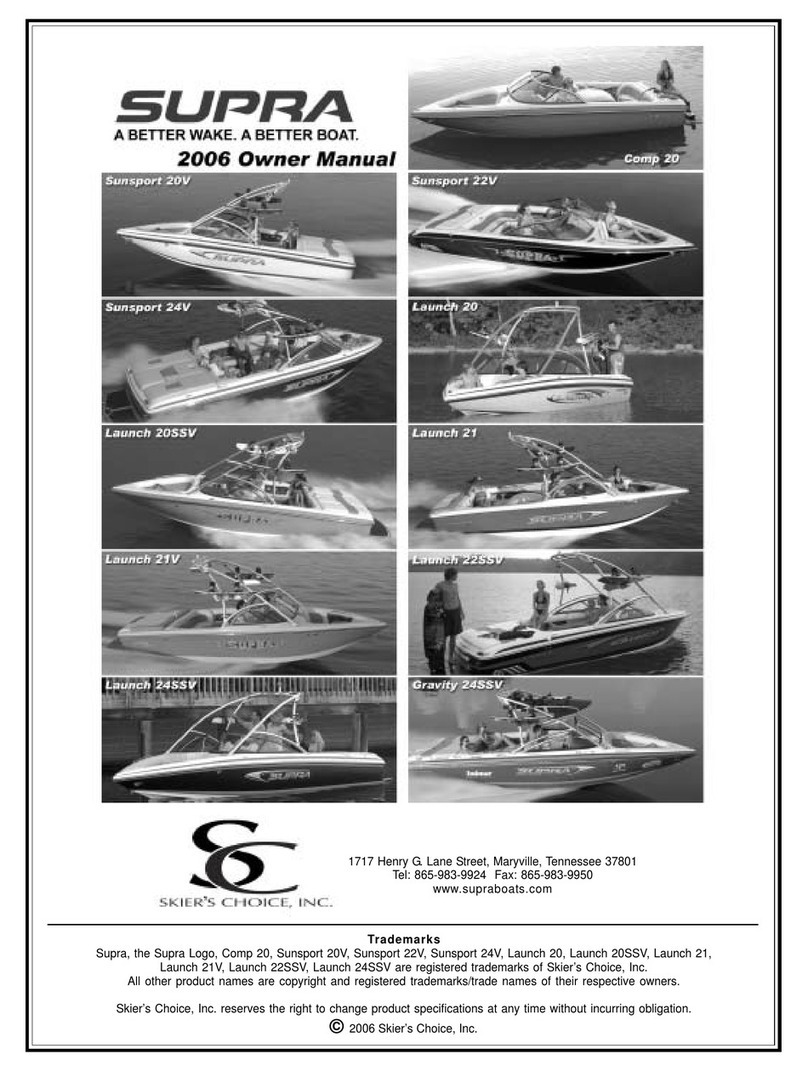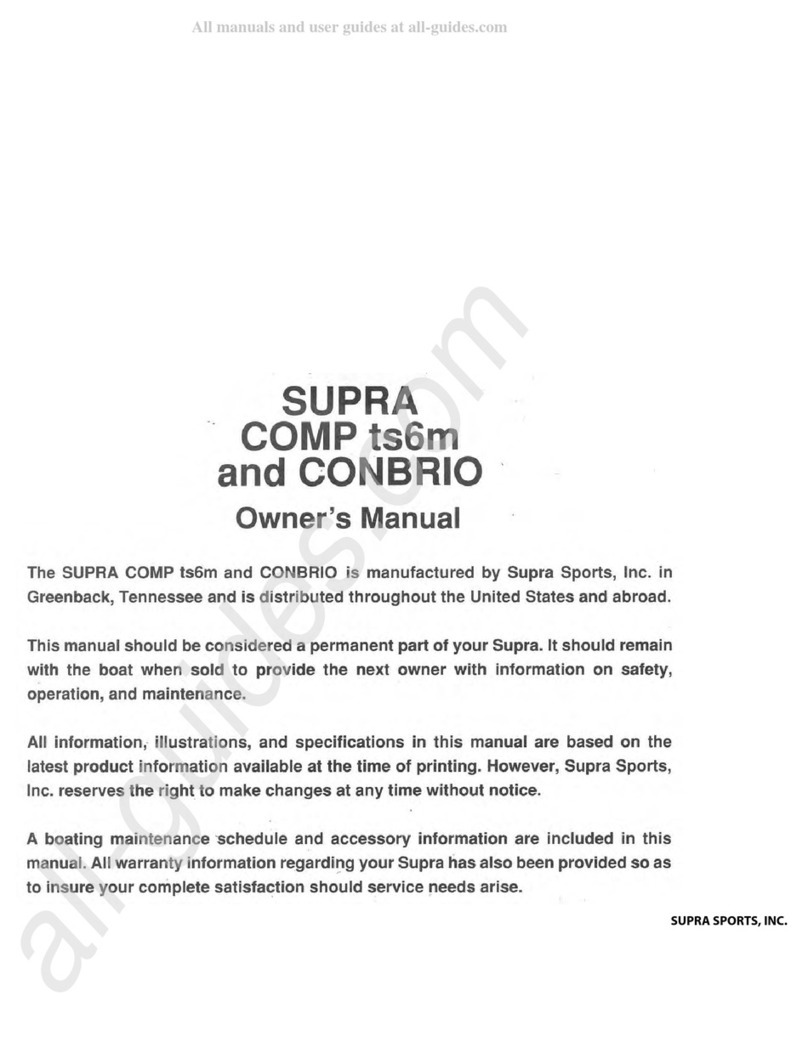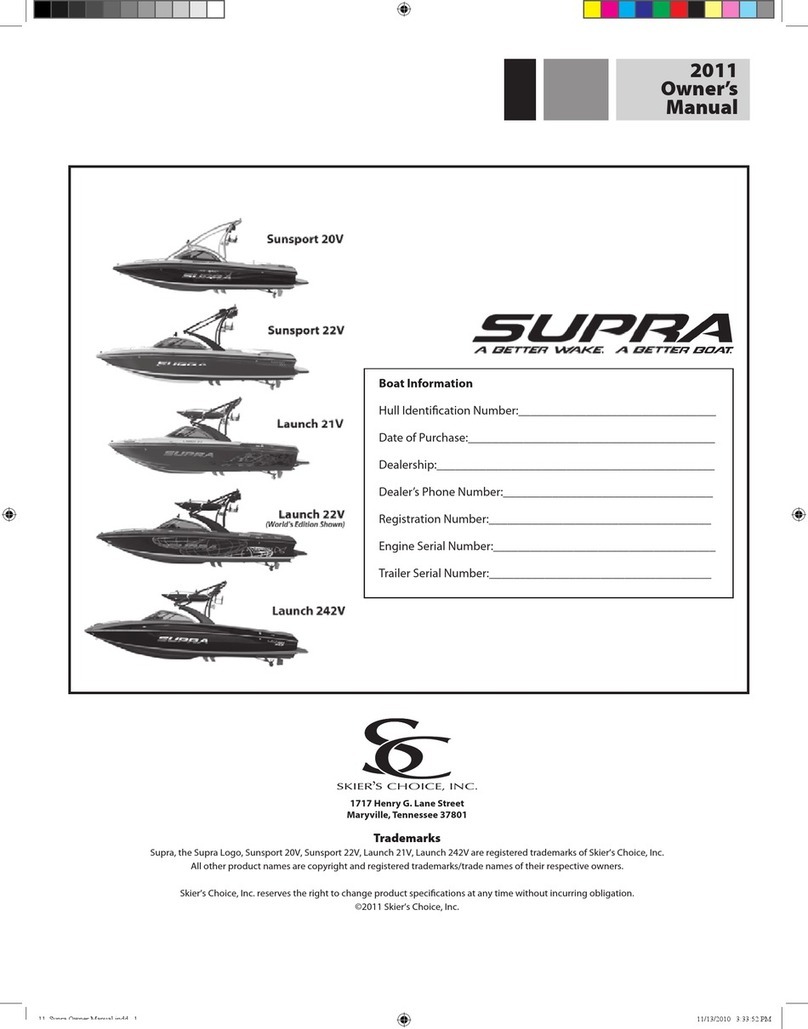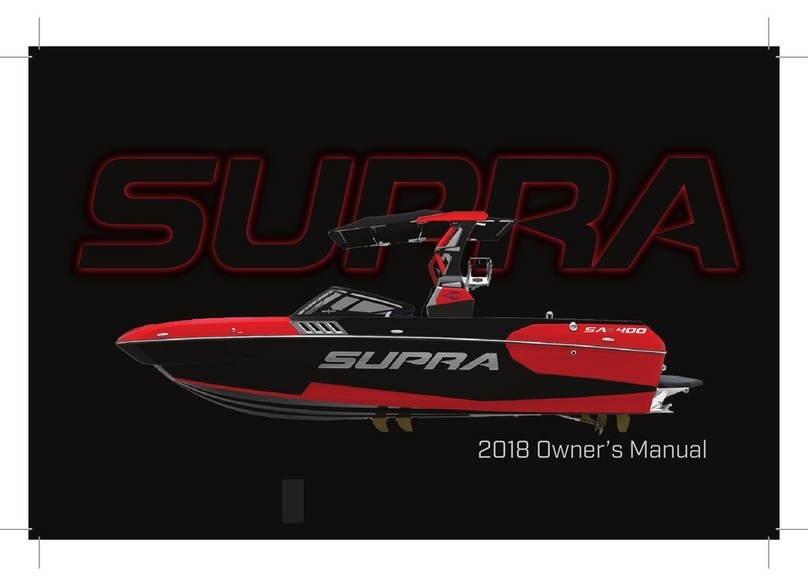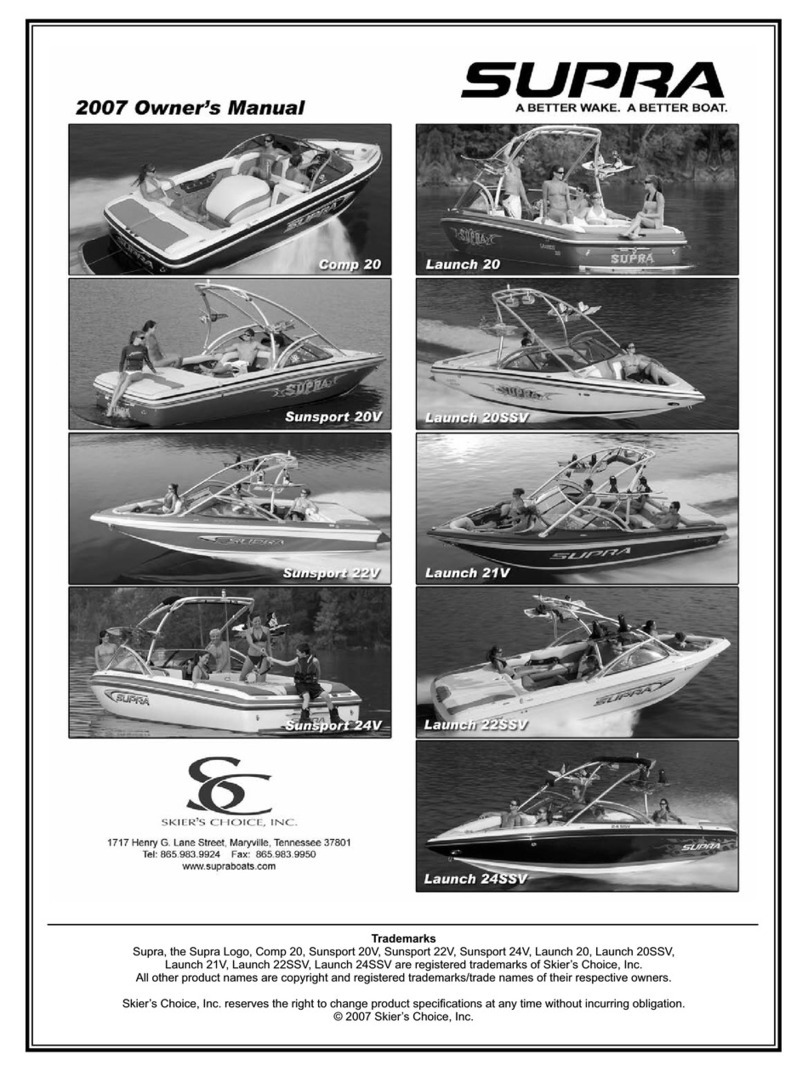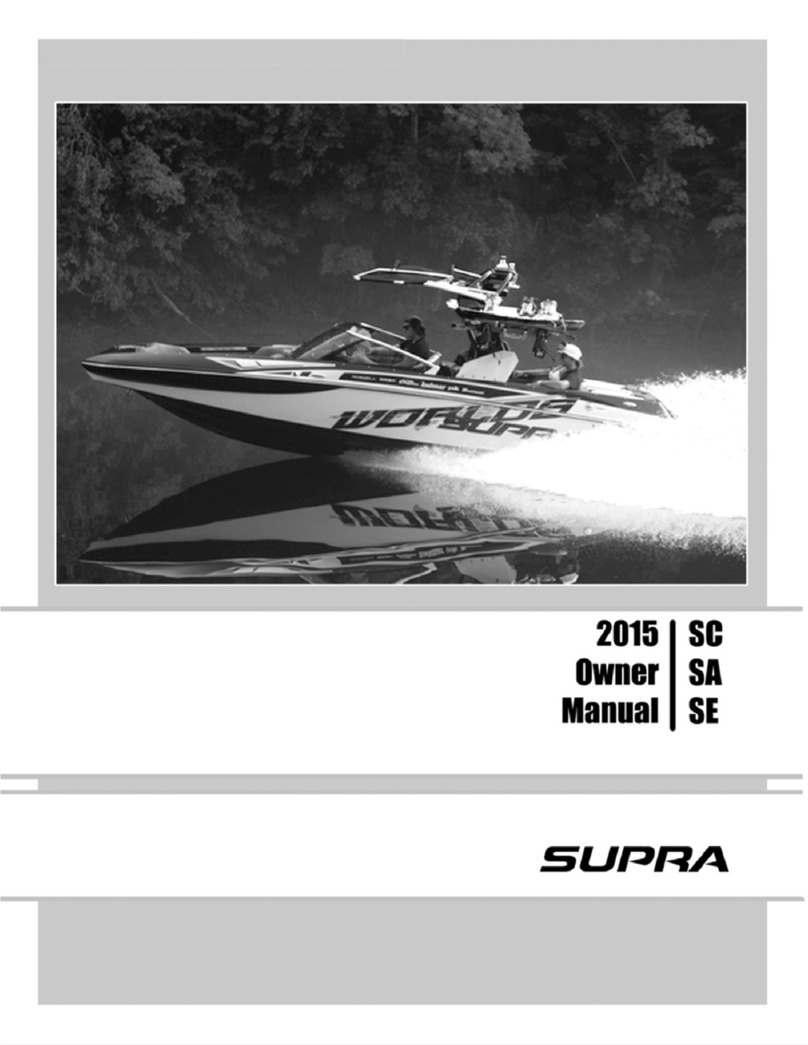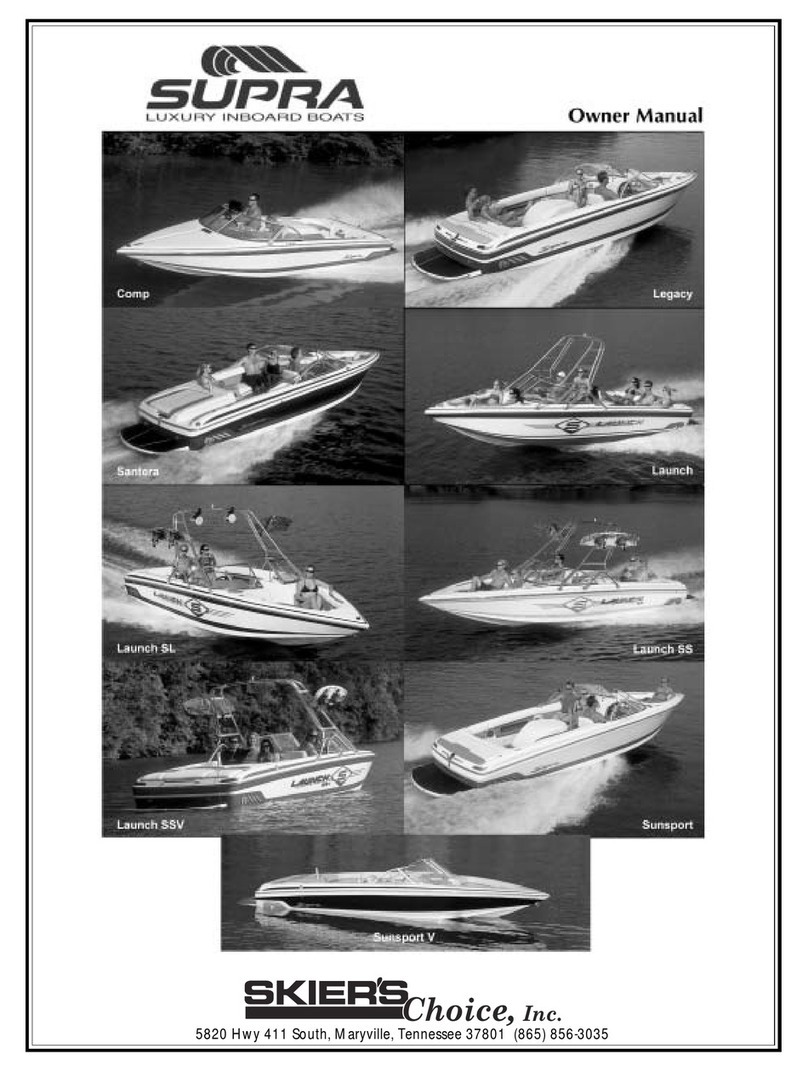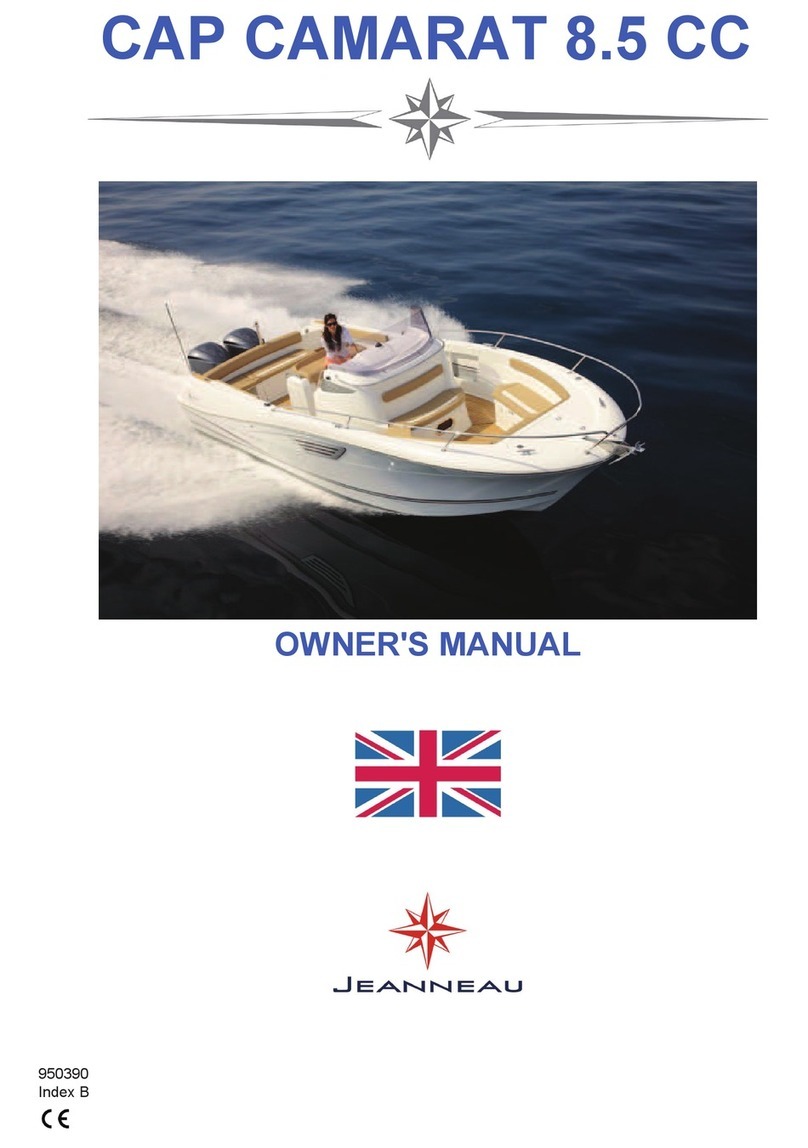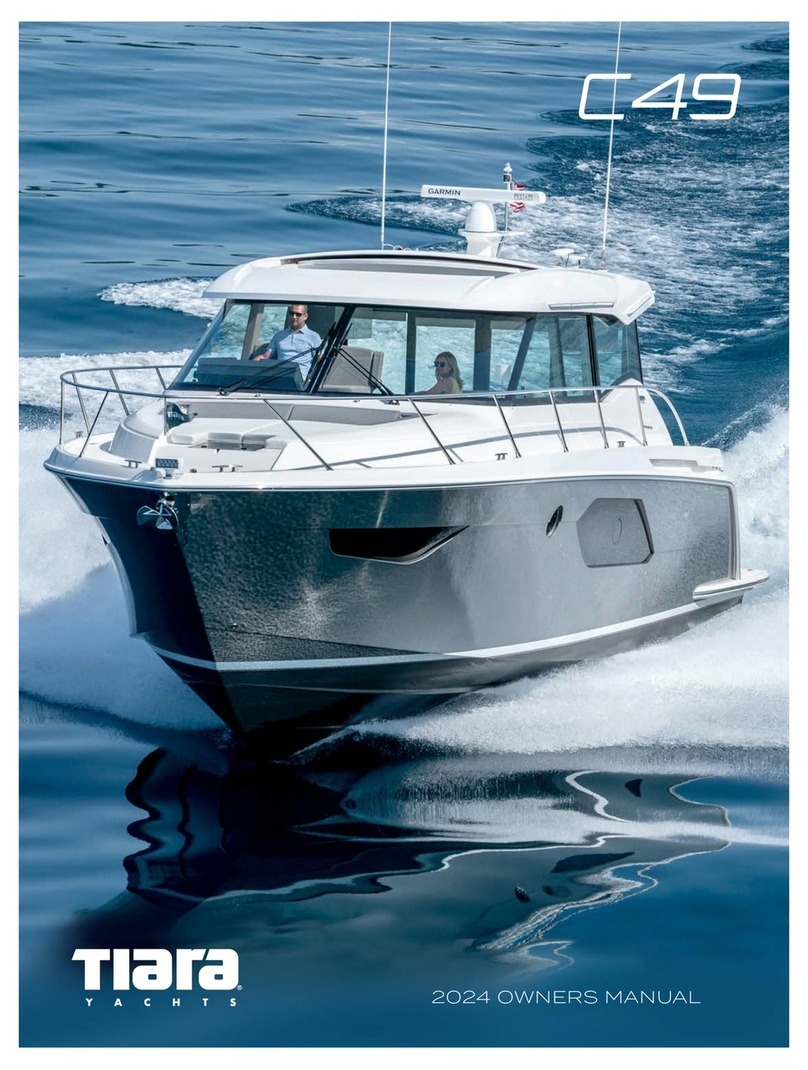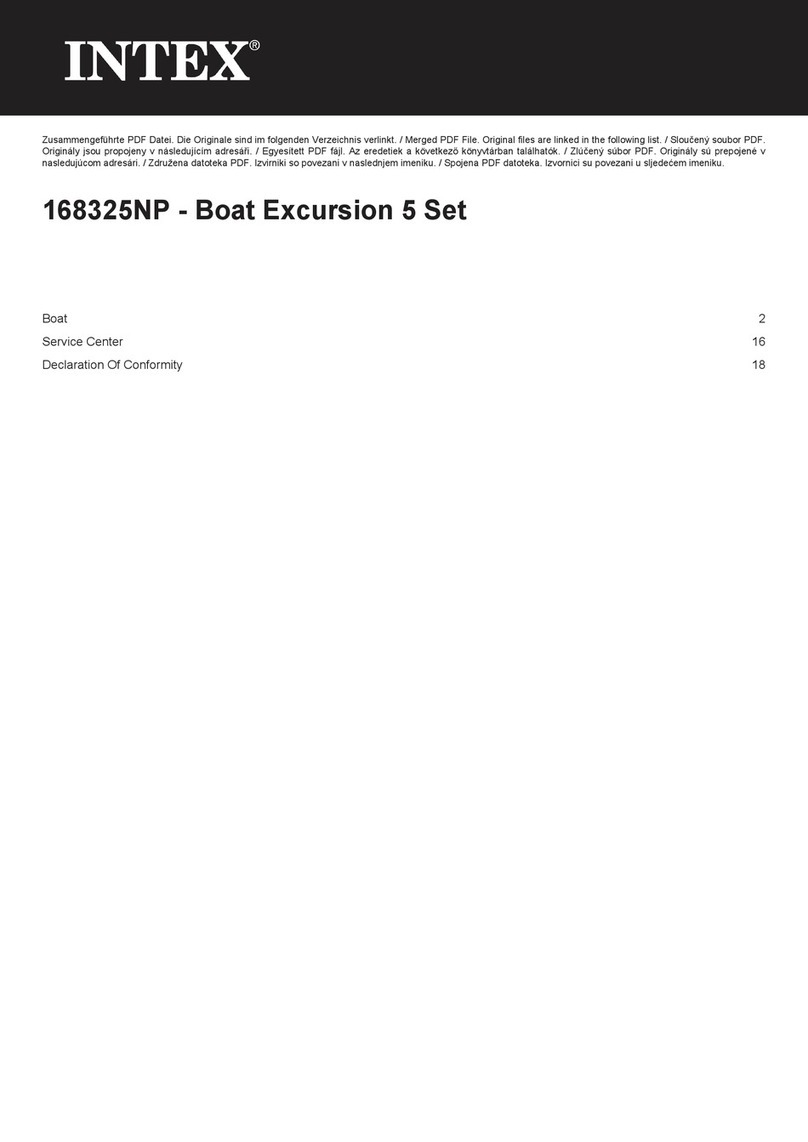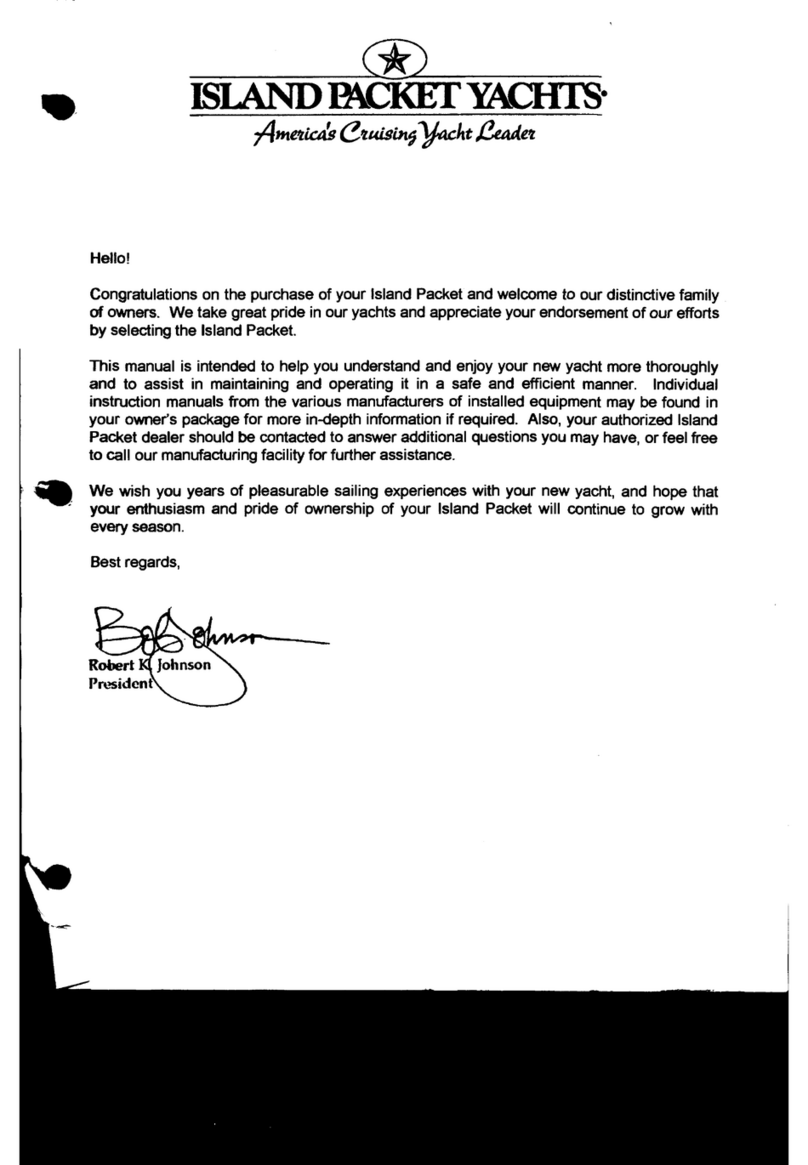
SUPRA - 7©2005Skier’sChoice,Inc.
General Safety Precautions
- To avoid serious personal injury, DO NOT be on or about
theswimplatform while engine is running and keep away
from rear of boat while engine is running.
- To avoid serious personal injury, DONOToperate engine
while anyone is on or about the swim platform or in the
water near the boat.
General Safety Precautions (continued)
Failure to adhere to these precautions may result
in severe injury or death to you and/or others.
- Improper operation is extremely dangerous. Operators
mustread andunderstand alloperating manualssupplied
with the boat before operation.
- Remain seated at all times while boat is in motion.
- Never stand or allow passengers to stand while the
boat is moving. You or others may be thrown from the
boat.
- Children in the bow of the boat should be accompanied
by an adult at all times.
- Never operate the boat while under the influence of
alcohol or drugs.
- On-board equipment must always conform to the
governing federal, state, and local regulations.
- Gasoline vapors can explode. Before starting engine,
open engine box, check engine compartment for
gasoline vapors, and operate blower for at least four
minutes. Run blower below cruising speed.
- Leaking fuel is a fire and explosion hazard. Inspect
system regularly. Examine fuel tanks for leaks or
corrosion at least annually.
- Neveroverride ormodify theenginesafety shut-offswitch
or engine neutral starting safety switch in any way.
- Never remove or modify components of the fuel system
in any way except for maintenance by qualified
personnel. Tampering with fuel components may cause
a hazardous condition.
- Never allow any type of spark or open flame on board.
It may result in fire or explosion.
- It is the owner’s responsibility to check tightness of the
Rad-A-Cage Tower bolts BEFORE each use.
- The Rad-A-Cage Tower is designed to pull a single (1)
individual. DO NOT climb or sit on the Rad-A-Cage
Tower. Rope may loop on inverted tricks. DO NOT sit
behind the pulling point of the Rad-A-Cage Tower.
- It is the driver’s responsibility to ensure all passengers
are seated when boat is underway.
- The tow bar is not designed for vertical extensions. Any
modifications to the tow bar or its mountings may result
in damage to the boat and injury to the user.
- Rear storage area is located above the gas tank and is
not designed for ballast. Weight limit is 150 lbs. equally
distributed.
- The Rad-A-Cage Tower may strike low objects. Check
clearance height around docks, shore, overhanging
objects, bridges and power lines.
- Do not pull past 45 degrees of the centerline of the
boat. Failure to follow this rule could result in the boat
capsizing.
Failure to adhere to these warnings may result in
severe injury or death to you and/or others.
- This boat is a high-performance boat and capable of
quick and tight turns and changes in direction. It is the
driver’s responsibility to operate the boat in a manner to
ensure the safety of all passengers.
Boaters must continuously be aware of weather
conditions.
- Sudden storms, wind, lightning, etc., can unexpectedly
put boaters in grave danger. Always check the local
weather report before going boating.
It is the driver’s responsibility to determine if weather
or other factors have created an unsafe boating
environment.
- The driver is solely responsible for the consequences of
their actions.

